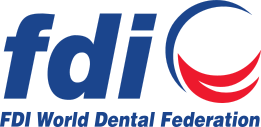How far can we go with endodontic microsurgery? Diagnostic to intentional replantation – outcomes, perspectives and current status
Location
Speaker
Dr Hubert Golabek
Dr. Hubert Golabek graduated from the Medical University of Warsaw, Poland in 2013. He was a doctoral student as well as a clinical instructor at the Department of Comprehensive Dental Care of the Medical University of Warsaw, Poland in 2014-2018 and defended with distinction his PhD thesis at the same university in 2019. In 2016 he also became an alumnus of the International Program in Endodontics at the University of Pennsylvania, USA. Apart from endodontics he deals with negotiation too. He accomplished a postgraduate programme in the field of healthcare units management at the Collegium of Socio-Economics of the Warsaw School of Economics, Poland in 2018 and a negotiation programme at the London School of Economics and Political Science, UK in 2020. He is an International Member of the American Association of Endodontists (AAE) and a member of the Polish Dental Association. He is a founder and incumbent chairman of the Section of Endodontics of the Polish Dental Association.
Organizer
Abstract :
Endodontic microsurgery is an inherent part of contemporary endodontics. Surgical and non-surgical interventions should be considered equally for treating disease of endodontic origin. It is not a treatment of last resort. Adequate planning, qualification and execution of the procedure help to maintain teeth that would be otherwise extracted. The wide scope of endodontic microsurgery comprises procedures such as: diagnostic surgery, root-end surgery, resurgery, resorptive defects management or intentional replantation. The advancement in the field allows implementation of guided tissue regenerative methods and 3D-printed surgical guides. This lecture will summarize current knowledge and techniques that shape modern endodontic microsurgery with perspectives for further advancement. The presentation will be supported by literature and clinical cases to illustrate the discussed material. Microsurgical considerations from case selection to the outcome will be covered. Clinical advantages, disadvantages along with pitfalls will also be discussed.
Learning objectives :
- Describe the range of procedures that form microsurgical endodontics
- Discuss indications and contraindications for microsurgical endodontics procedures
- Identify clinical phases of microsurgical apicoectomy
- Describe advantages of endodontic microsurgery over traditional root-end surgery
- Recognize evidence regarding the outcome of endodontic microsurgery
Event website : https://bzs.bg/events/?lang=en
